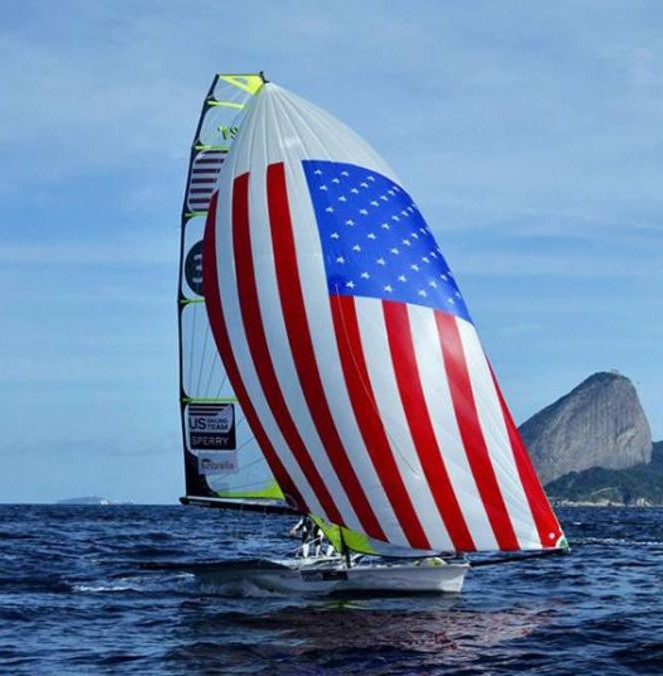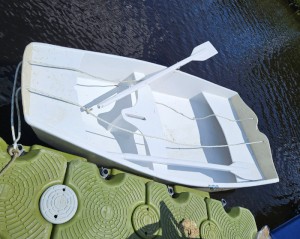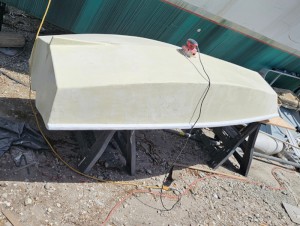Kaimusailing
s/v Kaimu Wharram Catamaran
| Vessel Name: | Kaimu |
| Vessel Make/Model: | Wharram Custom |
| Hailing Port: | Norwalk, CT |
| Crew: | Andy and the Kaimu Crew |
| About: | Sailors in the Baltimore, Annapolis, DC area. |
23 April 2024 | St Marys, GA
D4 Launchie
The laptop pooped the bed, so I have to scurry around with alternatives. Not as bad as typing on the phone.
17 April 2024 | St Marys, GA
Dinghy Skeg
I was suffering with what seemed like a cold and also had allergy symptoms. I awoke and felt fine. The green pollen that was coating everything was gone. Maybe it will return.
07 April 2024 | St. Marys, GA
Clammy Hands
Items came in from TEMU, the Chinese cut rate retailer. One was a nice little drone that cost about twelve and a half dollars. It looked like an easy thing to play with while I coughed and sneezed. I was fighting a summer cold, even though it is not summer elsewhere, it seems like it here. A nice [...]
02 April 2024 | St. Marys, GA
Sun Doggie
After laminating the cedar strips onto the gunwales of the dinghy I found the screws I used wouldn’t come out. The epoxy had seized them. The screw heads were stripped so I cut a straight slot in the heads with the cut off wheel. The cedar smoked when the screw heads got red hot. I could remove [...]
21 March 2024 | St. Marys, GA
Just Add Water
The rainy weekend started off with overcast and fog but no rain. It looked like I might be able to get something done on the D4 dinghy. I wanted to change the bow seat which is really the bow deck. The sailing option uses the deck to hold the freestanding mast. I didn’t like how the deck looked, [...]
01 March 2024 | St. Marys, GA
D4 Dinghy Alternative Seats
The rain event was more wind than rain, strong winds with gusts up to 44 mph. We drove into town to see what the harbor was like. There was a small sailboat that had dragged anchor and was sitting close to shore. The tide was out. We left and played with Bleu at Notter’s Pond.
Rio

.
Back at the cottage I continued working on the outrigger canoe model. It was temporarily held together with rubber bands and clamps. I was using electrical spring clips as clamps. I was looking at the shape and seeing one side bulging out while the other was more straight. I could apply pressure and make it symmetrical, but when I released the pressure it went back off center. This asymmetry could partly be removed when the bottom panels and decks were glued on. Adding a stiffener to the bulging side would also remove it.
.
Any deformity of the model could also occur in the full size build. Removing twist or unequal bending is usually accomplished by diagonal twine or temporary props and then locking in the correct shape by continuing the build, adding bottom or deck planking, or adding inwales to lock in the gunwale shape.
.
Down at the docks the next day I tried to start the outboard motor on the C&C 24 again, this time armed with a can of starter fluid. No go. I took out the plugs, which were severely fouled and scraped them clean. Still no go. I was getting a good workout pulling the starter cord on that motor. The owner, Captain Ed, was trying to sell me the motor, and I was trying to sell him the boat.
.
Back at the cottage I continued with the outrigger canoe model. I glued a deck on the ama (outrigger float) and glued the bottom planking on the main hull. I checked for twist while doing this. First the hull sides were glued together at the ends. Then the 4 bottom planking pieces were dry fit and butt straps were cut to lap the joints between the pieces. The bottom pieces were clamped to the hull with rubber bands, then the butt straps were glued to the panels inside the hull. The bottom pieces, now joined as one, were removed and glued back onto the hull.
.
It was all looking good, or as well as can be expected with my model making skills. Now the model needed decks on the ends, so ply was quickly marked, cut, and glued onto the hull. After the glue set up completely the edges of the decks were trimmed and sanded.
.
Scale model crossbeams were cut out of birch stock, 8 inches long and tapering from 1/4“ to 1/8“. Each crossbeam would be laminated from two layers of the stock, gradually sloping down from horizontal at the main hull to meet the deck of the ama (outrigger float). The ama deck is slanted outboard at an angle that matches the slope of the crossbeam.
.
First one layer of each crossbeam was glued to the hulls. After the glue had set up, a second layer was glued onto the first and the beams were forced into a curve that would bring the ama keel down level with the main hulls waterline. A heavy cooking pot was used to bend the beams until the glue set. The main hull was kept level by a half dozen rubber bands strapping it to a thin plank of wood.
.
One idea of the design is to extend the crossbeam slightly past the leeward gunwale, the gunwale on the side away from the ama. Then another short crossbeam inside the main hull will stick out near the waterline directly below the longer crossbeam above it. The two extended ends will be used to mount a rudder cassette that is free to turn. A leeboard will be mounted in the cassette and held in place by bungees or bicycle inner tube. If the boat hits something, the leeboard will be able to deflect without breaking a centerboard case or anything else. When the canoe changes direction, a 180, and the stern becomes the new bow and the old bow becomes the new stern, the leeboard can simply trail and flip 180 degrees on the new tack. At first I had the idea of mounting this leeboard and cassette on a crossbeam amidships which would be a good location for sailing upwind. Then I thought I would add cassettes at the other crossbeams and move the leeboard to whichever end of the boat was the stern to use it as a rudder when sailing downwind or broad reaching. Then I got the idea to forget about the amidships crossbeam and use just two cassettes at each of the two remaining crossbeams, each with its own leeboard, and steer the boat with the aft leeboard. Then when the proa tacks (shunts) just the tiller needs to be switched.
.
My idea of using an amidships crossbeam was necessary if I was using a Dierking-Gibbons rig or Oceanic Lateen rig. Both rigs need a mast or crane stepped near amidships and the crossbeam would provide the support for the mast step. The more I thought of all the claptrap that goes along with these two rigs, the more attractive the freestanding cat ketch rig became. It only needs two spars and there are no shrouds, brailing lines, stays, and such. One problem with the proa is what happens when you are taken aback by a windshift. Both the Oceanic Latteen and Dierking-Gibbons rigs will jam back against the mast or crane that holds the spars of the sail. Gary Dierking has a “shock absorber”, an additional spar that backs up the mast so it doesn’t collapse toward the ama when backwinded. The shock absorber has an elegant telescoping spring action build into it smoothly take the shock of the back winded sail.
.
If the freestanding cat ketch (actually a schooner) gets backwinded, the sails can simply rotate with the wind, as long as the sheets are free. The proa could then be tacked just like an ordinary boat. Two other aspects of the freestanding two masted rig are on the one hand, a lower center of pressure on two smaller sails, and on the other hand, the drawback of one sail blanketing the other.
.
In “The Sharpie Book”, by Reuel Parker, the cat ketch rig is described in full and its handling characteristics and sailing qualities are discussed in detail. The sails can be sheeted “wing and wing” very effectively. Cat ketch rigged sharpie sailboats were so much superior to other yachts that they were banned from racing by the yacht clubs of that time. Of course modern yachts have highly developed rigs that are more efficient than those of yesteryear, but in the DIY world, where “Bang for the Buck” is the rule, the simple and effective freestanding cat ketch looks very attractive.
.
While waiting for glue to set up I watched Olympics coverage, but really wanted to see some of the sailing competition. At the Sailing Anarchy website, there has been a constant stream of caustic comments about the USA sailing team and how dreadful the Olympics are, how vile Rio is due to a polluted sailing venue, and how incompetent the coverage is of the events. After logging in at NBCSN I was surprised to see sailing was being streamed live and the event was the women’s 49‘er, a high performance sailing skiff. I watched the whole race and guess what, the USA women’s team of Henken and Scutt took the start and lead all the way around the course. They didn’t look too incompetent, tacking over on top of the Brazil boat, and blasting down the course under their red, white, and blue stars and stripes spinnaker. The photo is from NBC.






